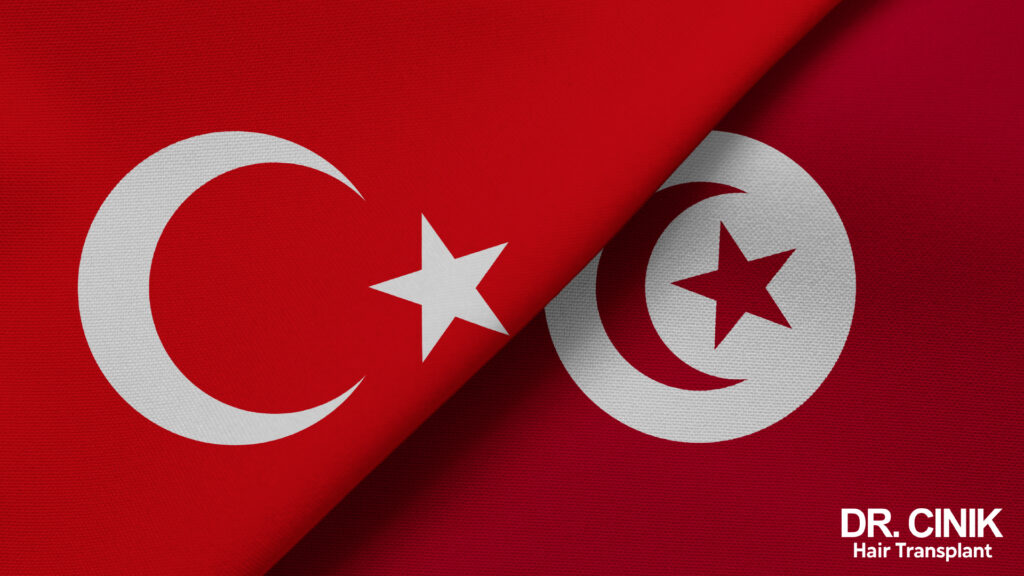PRP Hair Treatment: What You Need to Know
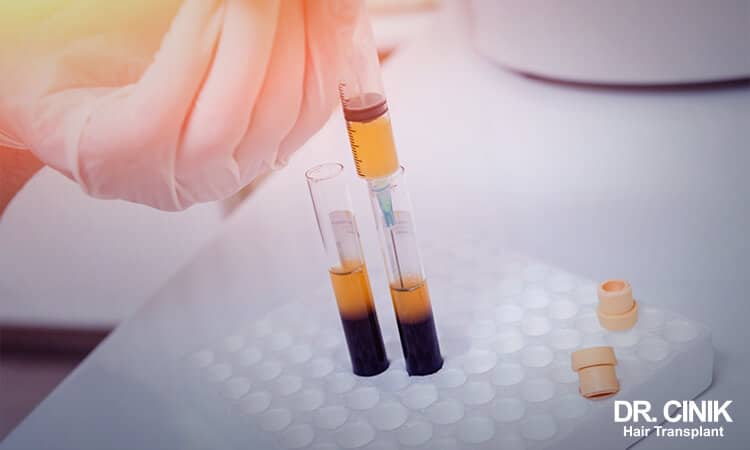
Sommaire
PRP, which stands for platelet-rich plasma, is extracted from the patient’s blood and has been used for years to treat musculoskeletal injuries and, more recently, skin injuries. PRP injections into the skin or use after microneedling (a method that utilizes small needles to produce microscopic skin incisions) are sometimes referred to as “vampire treatments” because of their reputation for producing dramatic cosmetic results. PRP has gained attention as a possible treatment for hair loss, one of the most difficult dermatological issues.
What Is PRP Hair Treatment?
PRP therapy, also known as platelet-rich plasma therapy, is a medical treatment for hair loss that consists of three stages: first, the patient’s blood is extracted, then it is processed, and last, it is injected into the scalp.
Injections of platelet-rich plasma (PRP) are thought by some in the medical world to stimulate the body’s own natural process of hair development and to keep it going by boosting the amount of blood that flows to the hair follicle and thickening the shaft of the hair. This method is sometimes used with other treatments for hair loss, such as drugs or surgical procedures.
Platelet-rich plasma treatment has been practiced ever since the 1980s. It has been applied to treat a variety of conditions, including the mending of torn tendons, ligaments, and muscles.
Does PRP Work for Hair Loss?
Androgenic alopecia, the most prevalent kind of hair loss, also known as male-pattern baldness (MPB), can be treated using platelet-rich plasma therapy (PRP therapy). However, according to Dr. Emrah Cinik, your chances of success are increased if you begin treatment when your hair loss is still in its early stages.
It is illogical to go into a situation with a large bald spot and expect to have successful outcomes.
Steps of a PRP Hair Treatment Session
PRP hair treatment has 3 main steps:
1: Drawing Blood
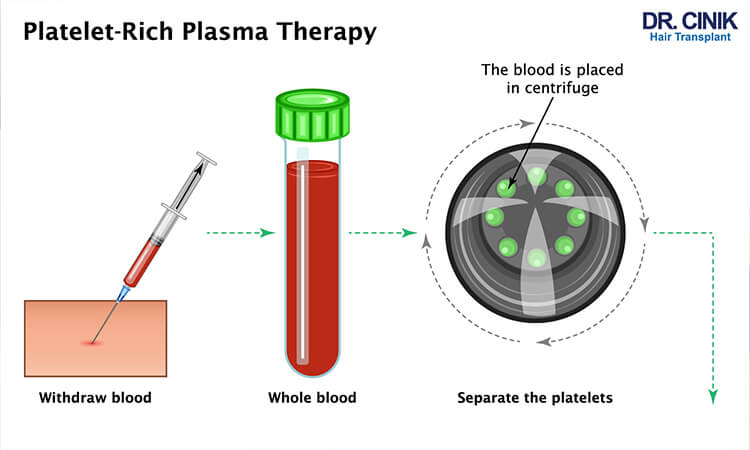
A sample of your blood is extracted, most commonly from your arm, and then placed in a centrifuge (a machine that spins rapidly to separate fluids of different densities).
2: Blood in Centrifuge Machine
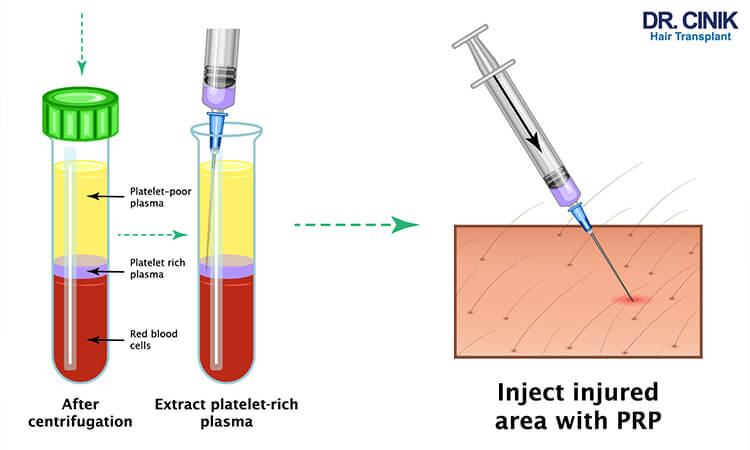
Your blood will divide into three layers after being centrifuged for roughly 10 minutes:
- Plasma with a low concentration of platelets
- Secondly, PRP (platelet-rich plasma)
- Red blood cells
3: Injecting PRP into the Scalp
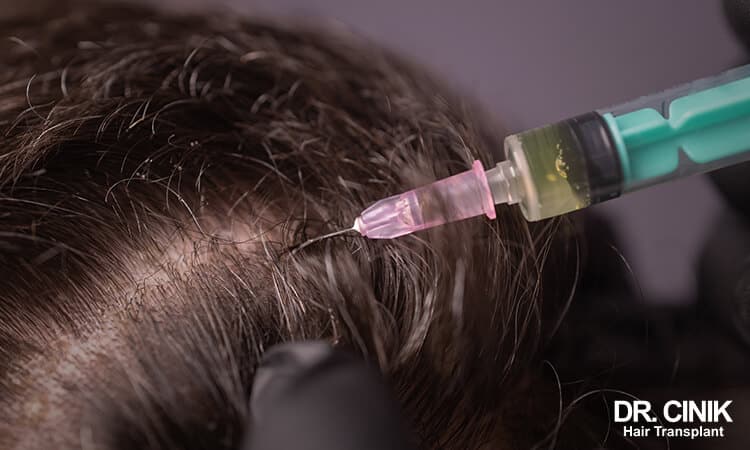
In order to stimulate hair growth in bald spots, the platelet-rich plasma is taken into a syringe and injected into the scalp.
How Often Should You Get PRP Hair Treatment?
Usually, PRP treatments call for three visits, four to six weeks apart. Maintenance procedures should be conducted every four to six months for optimal results.
PRP vs Mesotherapy for Hair Treatment
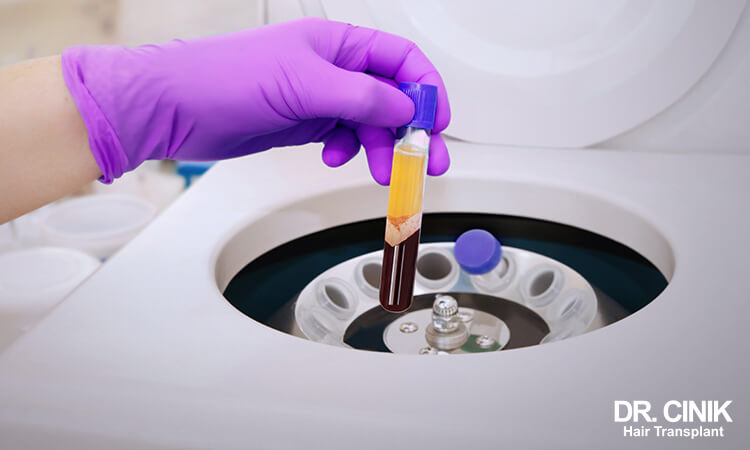
Medical professionals inject a unique solution into the scalp during a mesotherapy treatment, whereas in PRP they use the patient’s own processed blood. Top doctors agree that PRP is superior to mesotherapy for treating hair loss. When compared to mesotherapy, PRP for hair restoration is more efficient and economic.
PRP Hair Treatment and Hair Transplant?
Combining PRP with hair transplantation has been demonstrated to be effective in a number of studies. A group of 20 males suffering from male pattern baldness was used in the first trial, and the results showed a 15% increase in hair yield in follicular unit density.
Two other studies yielded similar findings; the first compared the effectiveness of platelet lysate (PL) and activated PRP (AA-PRP) on follicular unit grafts transplanted with each; after 4 months, 99% of follicle regeneration had occurred in the PL treatment area, 75% in the AA-PRP treatment area, and 71% in the saline treatment area.
In addition, a study of 40 patients who had undergone follicular unit extraction (FUE) hair transplantation demonstrated that PRP could be utilized as a combined treatment with FUE.
The benefits of intra-operative PRP therapy are:
1. Significantly improved density
2. Quality of hair growth
3. Reduced catagen loss of transplanted hair
4. Early recovery of the skin
5. the Faster appearance of new anagen hair
when doing an FUE transplant on a patient.
Can You Exercise After PRP Hair Treatment?
For at least two days after treatment, you should refrain from strenuous exercise, sun, and heat exposure. Two days after getting PRP, you shouldn’t do anything steamy, like going to a sauna or swimming. occur more frequently or take longer to resolve.
 en
en

